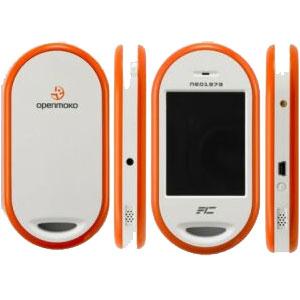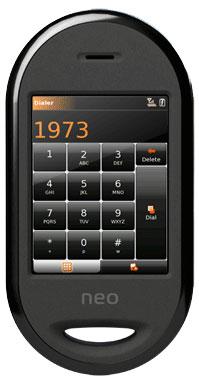The Openmoko project was founded by the Taiwanese company, First International Computer, Inc. (FIC). Their stated goal is to create a completely open phone, meaning that the hardware is just as accessible and hackable as the software ? for those who are up to it. Not only can anyone download the source code for the customized Linux OS, but the handset schematics are readily available.
I first heard about Openmoko in late 2006, after taking that final plunge into the world of open source computing. Initially a quiet buzz in the Linux community, the idea, and name, grew in popularity amongst smart phone addicts and gadget aficionados until Openmoko became the geek phone of the future. Rumors flourished, sexy pictures were leaked, and vague release windows were continually pushed back. This made the project that much more alluring, for a time.

Two years after the initial frenzy, and one year after the hardware was first made available to developers, interest seems to have waned a bit. With all of the current open source hubbub surrounding Android, I've found myself wondering, ?What ever happened to Openmoko?? In order to contextualize what news there is, and emphasize the hardware changes that have taken place, I think a short recap is appropriate.
It all began when, in a bold statement of intent, the Openmoko team branded their introductory device the Neo1973 ? a tribute to the first mobile phone call, made by Martin Cooper. Released on July 9th, 2007, with price points of $300 and $450, the basic model came with the standard accessories one would expect for a consumer phone, but the advanced package contained a slew of software and hardware development tools, including a debug board. Officially, all Neo1973s were sold out by February of 2008, never to be produced again... Recently, however, some back stock has 'turned up' in the hands of authorized resellers.
Today's Openmoko phone (the GTA02) has been dubbed the Neo FreeRunner. The developers' version started shipping on June 24th, 2008. There is no basic or advanced option for the FreeRunner ? only (what will later be) the consumer version - though the debug board can be purchased separately for $99. Until given the green light by FIC, all web sites offering the phone are laden with disclaimers, designating it a developers' product. It goes for $399.

The phone's name change has brought with it a number of new features and advancements, including 802.11 b/g Wi-Fi, two triple-axis accelerometers and 256 MB of NAND flash memory (in addition to the 128 MB SDRAM, which was bumped from 64). The memory is expandable to 8 GB via microSD or microSDHC cards. The processor has evolved from the 266MHz Samsung ?System on a Chip? of the 1973 to an ARM9 400MHz processor with 2D/3D graphics acceleration.
The FreeRunner's Tri-band GSM and GPRS are available in two variants: 900/1800/1900, and (what the 1973 lacked) 850/1800/1900. So, this thing should operate just about anywhere. The current FreeRunner package does, interestingly enough, include travel adapters.
Both versions of the phone sport a 2.8? TFT color display with 480 x 640 resolution at 285 ppi, a touchscreen suitable for fingers or styli, assisted GPS, Bluetooth 2.0, USB 1.1 (slave/host/charge) and a 1200mAH battery. Each utilizes 2.5G wireless technology. Either phone can run Openmoko or Qtopia software, though Qtopia is the only Neo-capable OS fit for consumer use at this point. The Openmoko software is what everyone, including FIC, is waiting on. The hardware is ready to go.
Openmoko Linux is a derivative of the Ångström distribution. Om 2008.9 is the latest incarnation of the software, and is the first to move away from the GTK on X11 interface of previous versions to the employment of multiple toolkits. Om 2008 uses Enlightenment Foundation Libraries as an application launcher, Qtopia for telephony, and custom user interface applications built using the ELF toolkit, QT toolkit, GTK+ toolkit and the Illume window manager.
In addition to taking care of the frame drops and other performance issues that plagued the 1973 during video rotation, painful boot times, the OpenStreetMap app, and other software issues have been improved or fixed altogether. Still, the OS is in the alpha stage, and there are several features that do not work properly. Those who want a fully-functional smart phone in the Neo 1973 or FreeRunner are encouraged to install Trolltech's Qtopia until the Openmoko software is consumer-ready.
The latest forecast indicated that this should happen by the end of the year, and I hope it holds true. It would mean that the final product would be available to the public by the new year (and probably sold out within a month). If previous delays were what the company needed to achieve its stated goals, the wait will have been worth it, but I think those who are interested in Openmoko are tired of guessing, anxious to see if the project will live up to its potential:
?Our license gives developers and users freedom to cosmetically customize their device or radically remix it; change the wallpaper or rebuild the entire house! It grants them the freedom, for example, to transform a phone into a medical device or point of sale device or the freedom to simply install their own favorite software.?
Hopefully, this vision will all add up to what the Openmoko developers fondly call, ?a smarter phone."